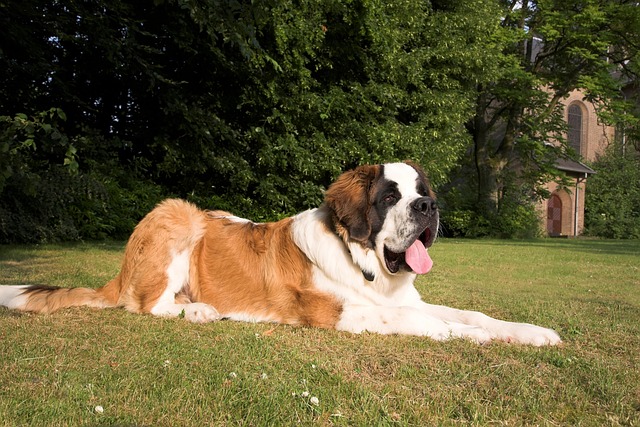St. Bernards are iconic dogs often associated with snowy mountains and barrels of brandy tied around their necks. Known for their size, strength, and gentle temperament, these dogs are beloved worldwide. However, there are many myths surrounding the breed that continue to influence perceptions, sometimes unjustly. Let’s dispel five of the most common myths about St. Bernards to better understand these gentle giants.
Myth 1: St. Bernards are Lazy and Inactive
The Myth: Due to their large, slow-moving appearance, many people believe St. Bernards are lazy dogs who spend most of their time lounging around.
The Reality: While it’s true that St. Bernards aren’t as energetic as some smaller or working breeds, calling them lazy is an oversimplification. These dogs were originally bred for rescue work in the Swiss Alps, which requires stamina, strength, and determination. St. Bernards can handle strenuous activities like hiking, pulling carts, and carrying heavy loads for extended periods.
However, their energy needs vary depending on their age and health. Puppies and younger St. Bernards tend to be more playful and energetic, while older dogs may be more relaxed. As long as they get regular exercise and mental stimulation, they are happy and healthy. Owners should provide at least an hour of exercise a day, including walks and playtime. Without sufficient activity, they might develop health issues or become destructive due to boredom.
Myth 2: St. Bernards Only Belong in Cold Climates
The Myth: Because St. Bernards are depicted in snowy environments, people often believe they can only live in cold climates and would suffer in warmer regions.
The Reality: St. Bernards are indeed well-suited to colder climates thanks to their thick double coats, which insulate them from extreme cold. However, this doesn’t mean they can’t thrive in warmer environments. St. Bernards can live comfortably in a variety of climates if their owners take precautions to prevent them from overheating.
In warm climates, owners should limit strenuous outdoor activities to cooler parts of the day, such as early morning or evening, and always provide plenty of water and shade. Air conditioning and fans are essential in hotter temperatures. Regular grooming helps remove excess fur, which can also reduce the risk of overheating. While a St. Bernard will never enjoy sweltering summer heat, they can adapt well if properly cared for.
Myth 3: St. Bernards Are Aggressive Due to Their Size
The Myth: Their imposing size leads many to assume that St. Bernards are aggressive dogs who may be difficult to control, especially around strangers or children.
The Reality: Despite their enormous size, St. Bernards are known for their calm, gentle, and friendly disposition. They were originally bred to help and protect travelers, not to be aggressive or confrontational. They are naturally patient and affectionate, especially with children, which is why they are sometimes referred to as “nanny dogs.”
Proper socialization and training, like with any breed, are essential to ensuring a well-adjusted dog. If not trained or socialized early, a dog’s size and power can be intimidating and problematic, but this is not a trait specific to St. Bernards. They are eager to please and generally easy to train, making them excellent family pets. Their size can be overwhelming, but underneath, they are gentle giants who crave affection and companionship, not conflict.
Myth 4: St. Bernards are Hard to Train
The Myth: Their size and perceived stubbornness make many people believe St. Bernards are difficult to train, especially for first-time dog owners.
The Reality: St. Bernards are intelligent and eager to please, which makes them more trainable than some might assume. While they may have a slower learning curve compared to smaller, more energetic breeds, this does not mean they are hard to train. Their calm temperament means they don’t have the hyperactivity that sometimes makes training challenging with other breeds.
Consistency and positive reinforcement work best with St. Bernards. Because of their size, it’s crucial to begin training early, when they are still manageable to handle. Commands like “sit,” “stay,” and “come” should be taught early on. However, owners must understand that St. Bernards mature slowly, both physically and mentally, so patience is key. Despite this, they are loyal and responsive dogs who will thrive with kind, consistent training.
Myth 5: St. Bernards Drool Constantly and are Unhygienic
The Myth: Perhaps one of the most widely believed myths about St. Bernards is that they are excessively drooly and hard to keep clean, making them undesirable for owners who value cleanliness.
The Reality: It’s true that St. Bernards can be prone to drooling, especially after drinking water or during hot weather, but it’s not an uncontrollable problem. The drooling can be managed with simple measures. Many owners keep towels handy to wipe their dog’s mouth after meals or drinks. Additionally, drooling varies between individual dogs, with some being more prone to it than others.
As for cleanliness, St. Bernards have relatively low grooming needs despite their size and thick coats. Regular brushing helps manage shedding and keeps their coat healthy, while occasional baths can control dirt and odors. With proper grooming, St. Bernards are no more difficult to keep clean than other large breeds. They are loving companions whose drool and grooming needs are manageable with a little effort and care.

St. Bernards are often misunderstood due to their size, history, and popular media portrayals. Far from being lazy, aggressive, or hard to train, these gentle giants are affectionate, intelligent, and eager to please. While they have specific needs, like proper grooming in warmer climates and training from an early age, they make wonderful pets for those willing to accommodate their unique characteristics. By debunking these myths, we can appreciate St. Bernards for who they truly are: loyal, loving, and remarkable dogs.

 Toledo, United States.
Toledo, United States.